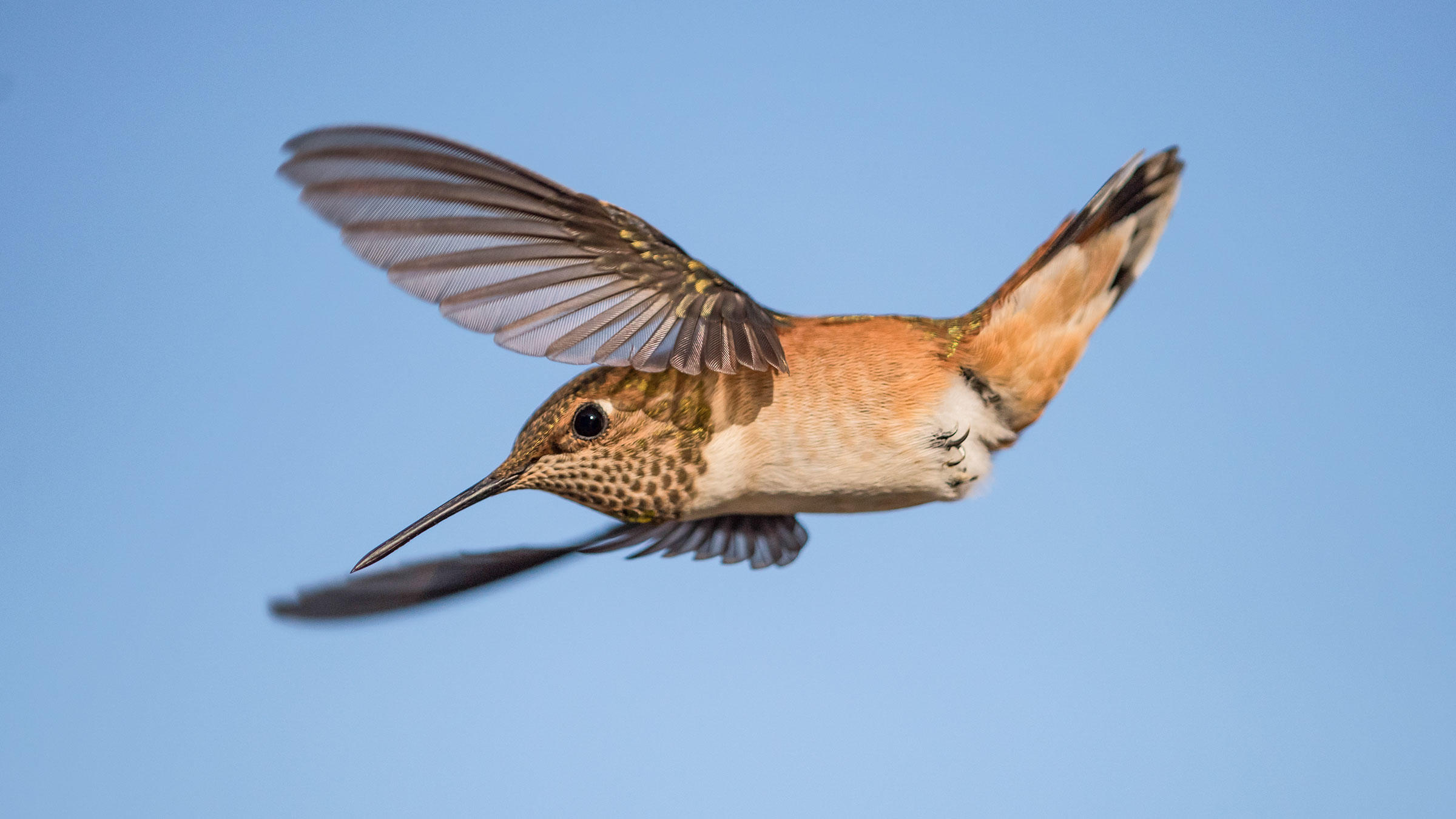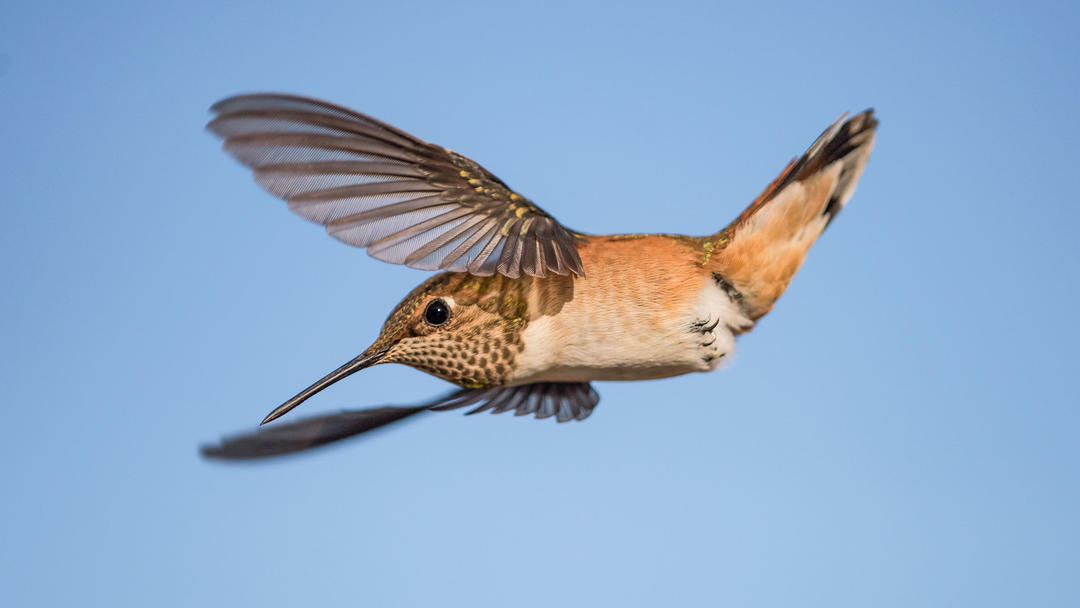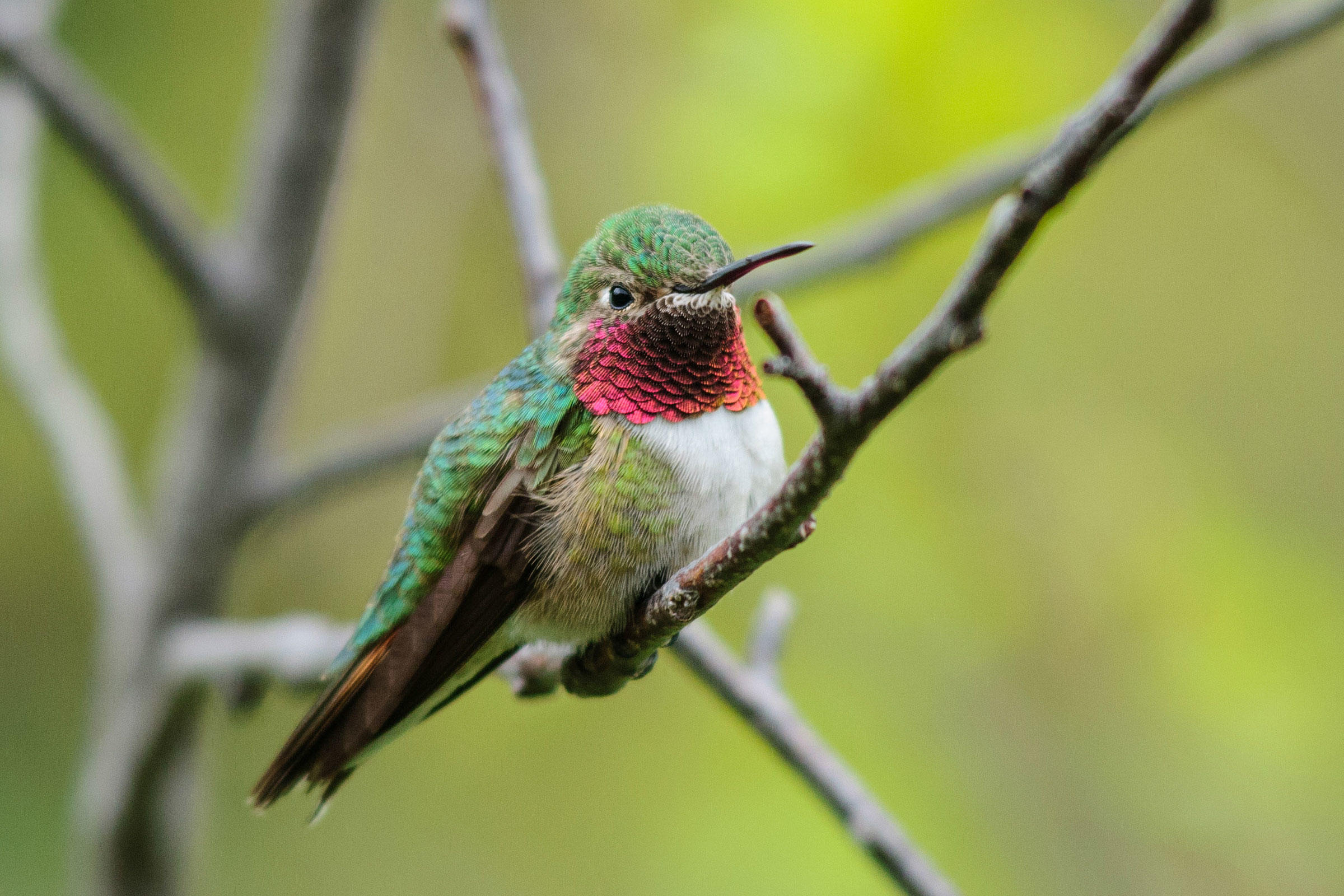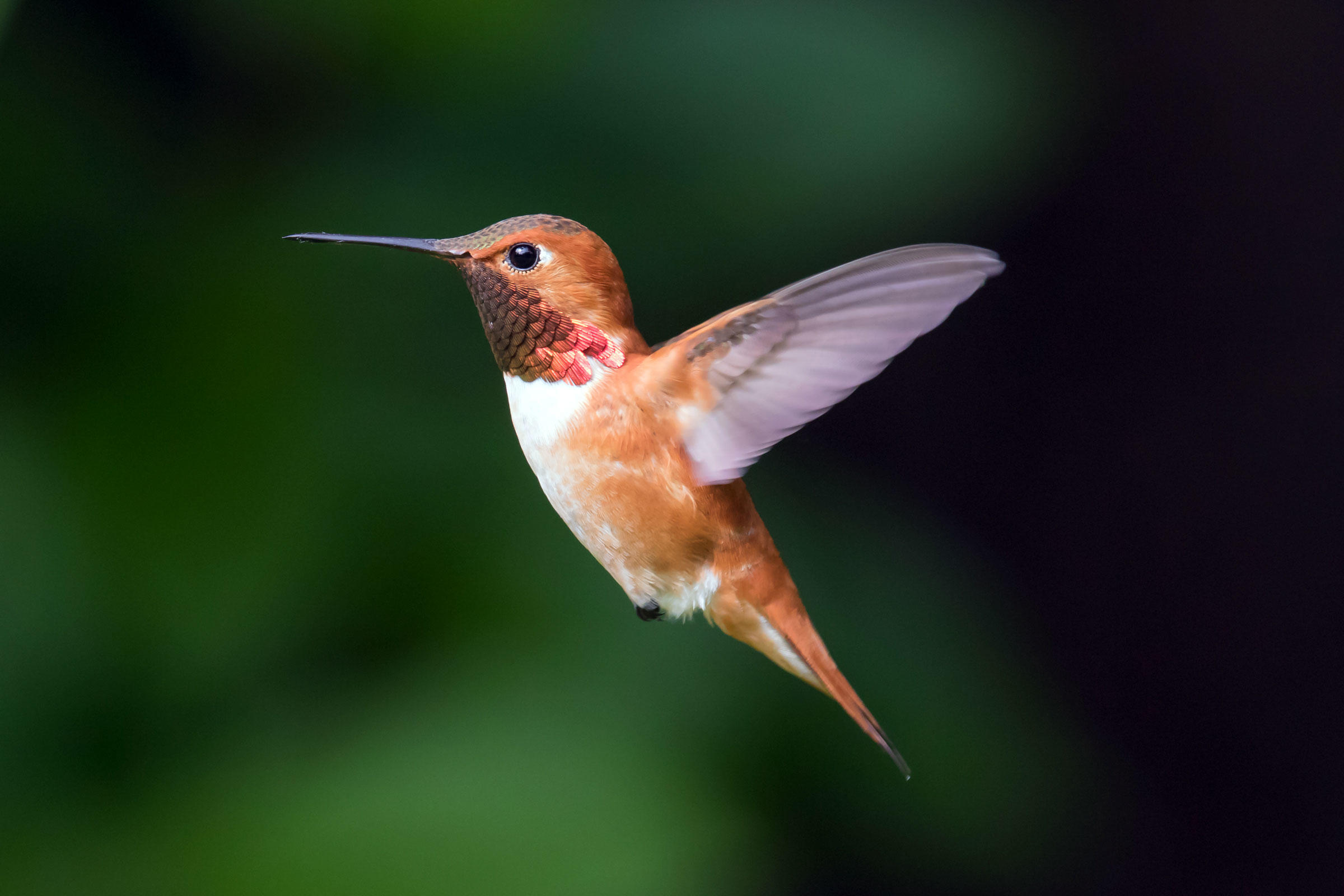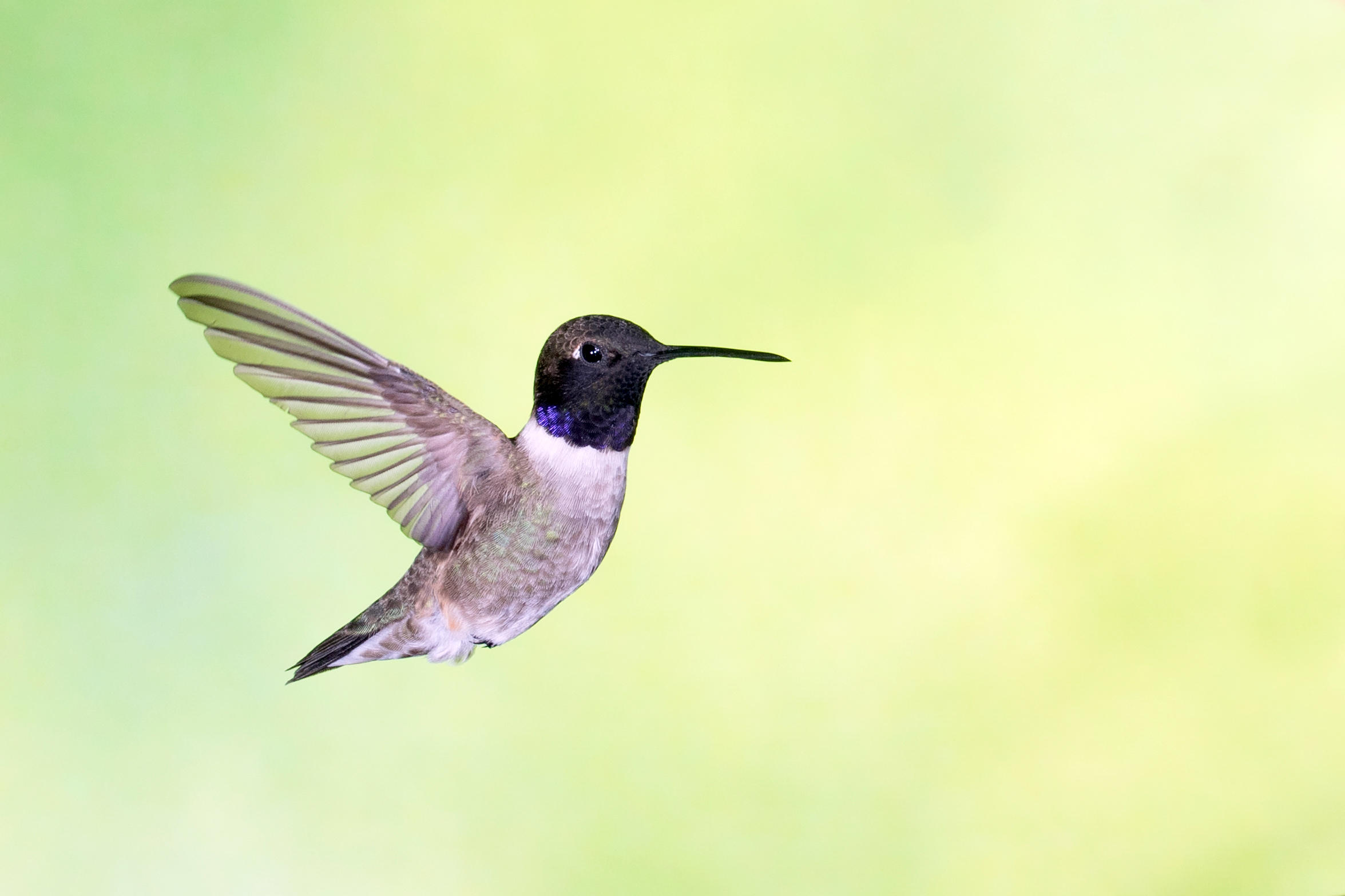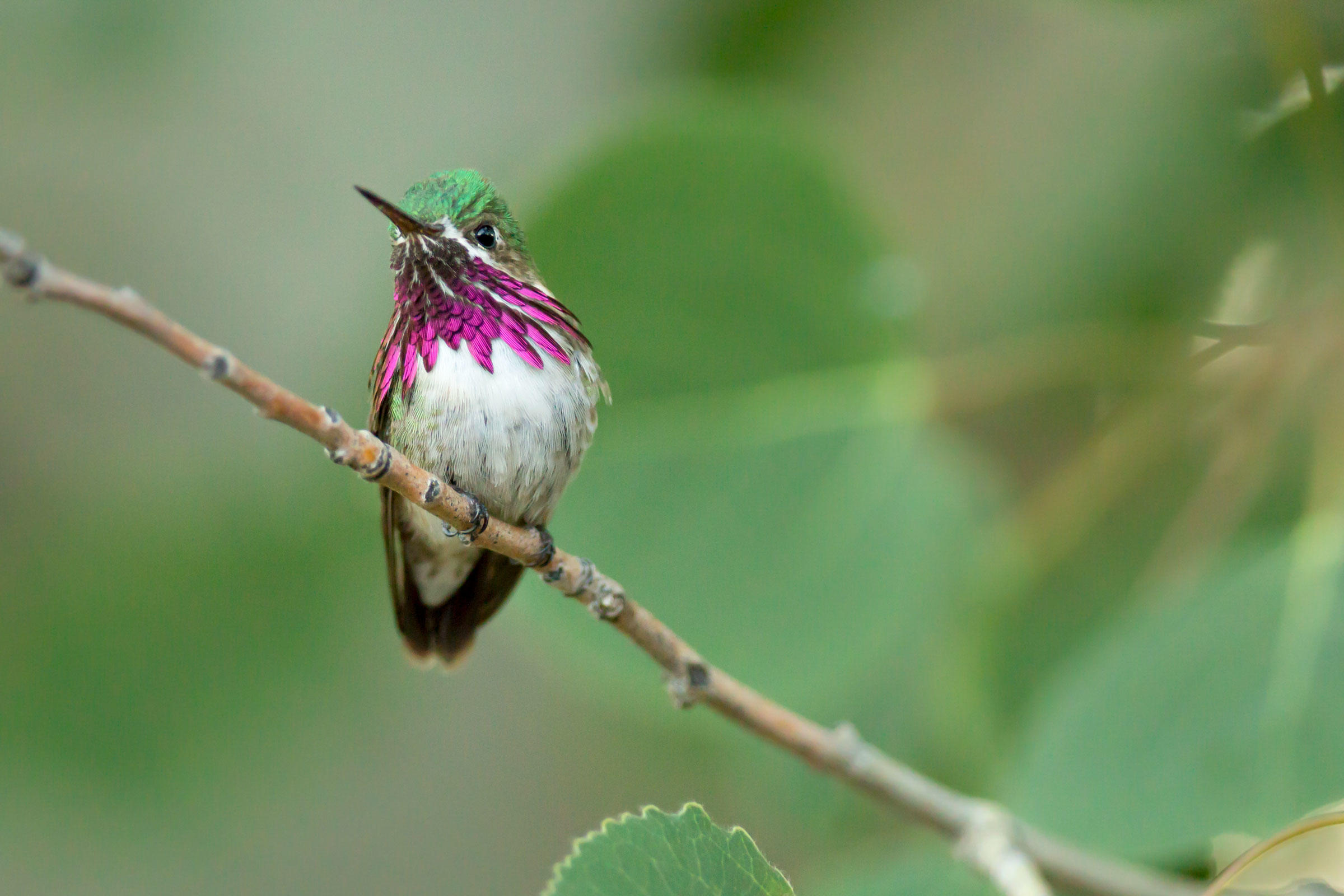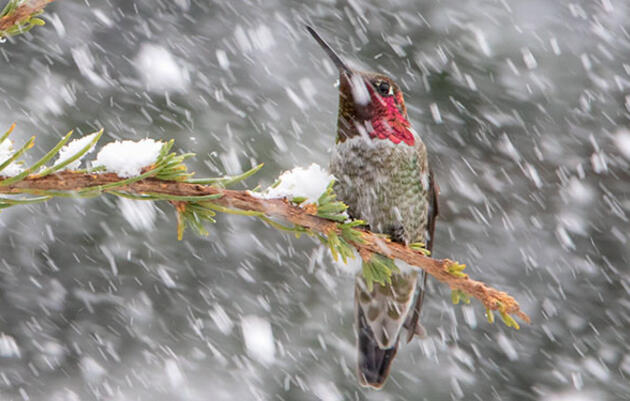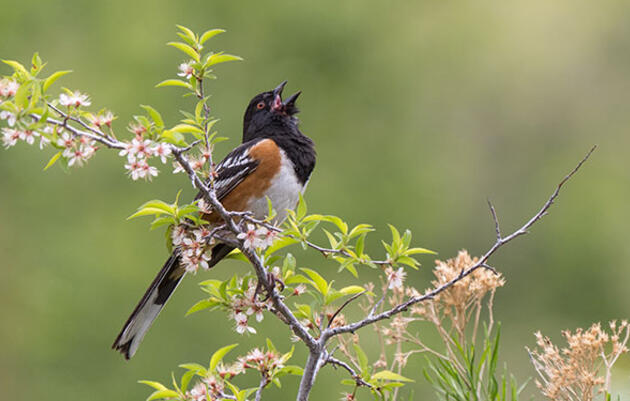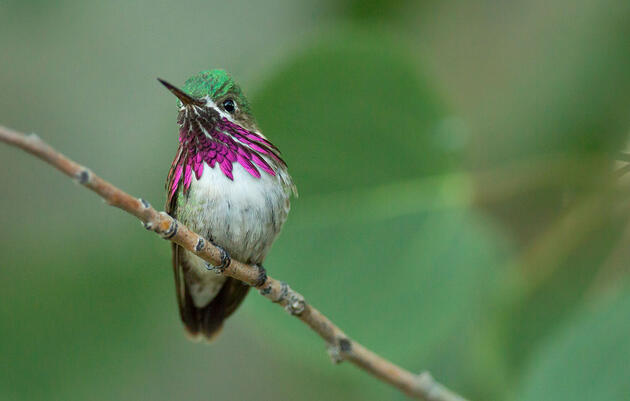In Colorado, Utah, and Wyoming, there are four species of hummingbirds that people regularly see. Broad-tailed (Selasphorus platycercus) and Rufous (Selasphorous rufus) hummingbirds are the most common. Less common species are the Calliope (Selasphorus calliope) and Black-chinned (Archilochus alexandri) hummingbirds.
Adult Broad-tailed Hummingbird males have a gorget (throat patch) of magenta. People sometimes misidentify them as Ruby-throated Hummingbirds (Archilocus colubris), but Ruby-throated Hummingbirds do not normally pass through our states. It’s far more likely you’re seeing a Broad-tailed. Broad-tailed males are the ones making the buzzing/whistling sound when they fly. The sound is produced by their outermost and longest feather on each wing.
Adult Rufous males have a bright orange gorget and are usually the most aggressive humminbirds at feeders. Adult Black-chinned males have a deep purple gorget, and adult Calliope males are unmistakable with their gorget of reddish purple streaks that resemble a beard. Females and hatch-year males of all these species are virtually indistinguishable (which is why we take precise measurements for our research), but a keen eye may notice the shorter tails of Calliopes.
Any Rufous Hummingbirds you see are probably just passing through on their way to breed further north and west, all the way up to Alaska. Black-chinned Hummingbirds can be found almost anywhere that’s fairly green, but tend to prefer wetter areas around ponds, streams, and rivers. Calliopes are usually found only at higher, colder elevations, which is remarkable since they are the smallest ones! Broad-tailed will be the most common. They usually nest in mountains and foothills but often come down to valleys to feed. Because of their abundance and fondness for mountains, I like to think of them as the true “Rocky Mountain hummingbird.”
Now that you know the hummingbirds, let’s get them to our gardens! Perhaps unsurprisingly, given their own appearance, hummingbirds are most attracted to bright and showy flowers. Almost any flower fitting those descriptions will get their attention but we want to use native plants! Hummingbirds in the Rockies like Indian paintbrush, scarlet gilia, fireweeds, mints, columbines, larkspurs, and penstemons (beardtongues). Feel free to choose whichever of these flowers (or other showy native flowers) you like!
One of the best ways to aggregate and observe hummingbirds is by hanging hummingbird feeders. If you hang feeders, there are a few things to keep in mind for the health of the hummingbirds. First, be sure to clean your feeder every few days. The dried sugar water that can cover feeding holes or even the sugar water in the container are excellent habitats for bacteria and mold. Second, I suggest not using store-bought sugar water mix, especially any containing dye. We don’t know if dye or the sugars used in mixes affect the hummingbirds, but they are delicate animals with sensitive kidneys. It is not worth the risk exposing them to things they may not digest well. A simple mixture of one part pure white cane sugar to four parts water is ideal and easily made at home. Finally, if you do hang feeders or have hummingbirds visiting your flowers, keep outdoor cats away as they are a major killer of hummingbirds.
With both plants and feeders, it may take a little while (months or seasons) for the hummingbirds to recognize your efforts. But don’t worry! If you keep it up, they will remember your garden and you’re likely to get large congregations of the little birds!
Even properly maintained feeders can spread disease through increased contact between hummingbirds and attract predators like cats. Concerns about their dependence on this non-natural food source also arise. As a conservationist, I am keenly aware of these concerns. However, personally, I feel that the enjoyment and connection to nature that hummingbirds provide outweighs any currently known risk (given properly maintained feeders). Because hummingbirds are relatively easy to attract and give people so much joy, I believe they are incredibly important as a way to encourage people to appreciate and conserve native flora and fauna, and that’s what we want as Habitat Heroes!

